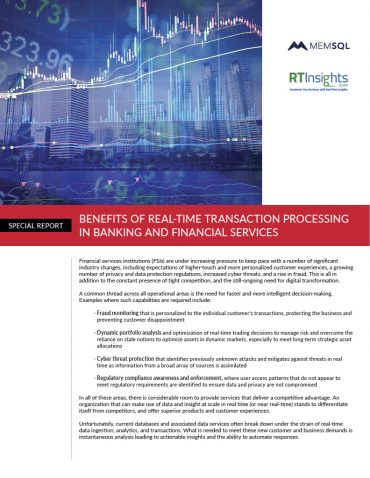
One of the most intriguing and unexpected findings in a new developer survey is the popularity and positive ratings of newer, lesser-known databases. With such competition in the market, database providers may be more willing to create easier-to-use and more cost-efficient tools.
The world of databases is dynamic and continues to evolve. New database entrants and established players vie for the attention of developers and organizations as they grapple with data and new technology. A recent survey from Basedash asked developers their preferences, awareness, and ratings of 42 different SQL, NoSQL, and vector databases. The result was the 2023 State of Databases report, and some of the conclusions might surprise you.
Why have databases undergone significant evolution?
Several key factors are behind the evolution of databases:
- Data growth and diversity: In recent years, the volume, variety, and velocity of data have exploded. The digital age has created vast amounts of structured and unstructured data for businesses to manage and analyze. Traditional relational databases have struggled to keep up with some of these data types.
- Scalability demands: Modern applications require high scalability levels to accommodate workload fluctuations and user demands. Scalability is crucial in the world of cloud computing and web-based applications. NoSQL databases, in particular, were designed with this scalability in mind.
- Flexibility and schema-less design: Companies need databases capable of operating with a more flexible schema or even a schema-less design. This flexibility would allow developers to adapt to changes without the constraints of fixed-schema frameworks.
- Real-time data processing: As companies pursue real-time analysis, databases capable of managing this type of stream processing have emerged.
- The proliferation of open source: The open source movement has played a significant role in transforming databases. As communities contribute to the development of databases specific to a use case, companies have more options than ever for building their engineering stack.
- Cloud computing: Cloud providers offer managed database services that simplify database administration, scalability, and high availability. This shift has accelerated the adoption of cloud-native databases.
- Polyglot persistence: Polyglot persistence is the idea of using the right database technology for a particular use case within an application. This has encouraged a heterogeneous database landscape.
- Specialized databases: As data needs have become more specialized, databases tailored to specific use cases have emerged. Examples include time-series databases (e.g., InfluxDB), graph databases (e.g., Neo4j), and geospatial databases (e.g., PostGIS), each optimized for their respective data types and operations.
Awareness and usage of databases: A Postgres world?
Postgres reigns across several categories, according to the feedback. When it comes to awareness and usage, Postgres captured the majority of responses. 79.7% of users were aware of Postgres, with MySQL and MongoDB coming in second and third with 69.6% and 73.8% respectively.
72% of respondents are not only aware of but also use Postgres. Although Redis appeared at number 4 on the awareness list, it tied with MongoDB as the most used database behind Postgres.
Respondents also showed a clear preference for using Postgres when starting new projects. Newer databases like Neo4j and Surreal made clear strides here, with long-time players Microsoft Access and Oracle DB appearing at the bottom of the list.
Database ratings
Survey participants also noted which databases they were most familiar with — Postgres again takes the top spot here. And this is where it gets interesting. Newer databases like Weaviate, Surreal, and Timescale also garnered top ratings, reflecting a growing popularity and recognition of performance.
The remarkable resilience of SQL
One of the survey’s most intriguing and unexpected findings is the popularity and positive ratings of newer, lesser-known databases like Weaviate, Surreal, and Timescale. Despite their relatively recent emergence in the database landscape, these databases seem to have made a considerable impact. This unexpected rise challenges a conventional belief that organizations will stick with well-established, tried-and-true technologies.
This could spell good news for innovation. With such competition on the market, developers may find database providers more willing to create easier-to-use and more cost-efficient tools.
The survey indicates broader trends
This small survey highlights how database preferences have evolved and could indicate where database usage is heading as companies reformulate and master how they manage increasingly big data.
Diverse Database Ecosystem
The study’s extensive list of 42 databases reflects the incredible diversity within the database ecosystem. Developers have a wide array of options to choose from, catering to various use cases and preferences. This diversity is a testament to the dynamic nature of technology, where innovation continues to thrive.
Resilience of SQL
Despite the rise of NoSQL databases in recent years, SQL databases, led by Postgres, maintain a strong foothold. The enduring popularity of SQL can be attributed to its reliability, maturity, and well-established community support. Developers continue to trust SQL for mission-critical projects, challenging the notion that SQL was fading into obscurity.
Emergence of Newcomers
The unexpected rise of newer databases like Weaviate, Surreal, and Timescale indicates that developers are open to exploring innovative solutions. Despite their recent entry into the scene, these databases have garnered significant interest and positive ratings, demonstrating that innovation and performance can quickly propel newcomers to prominence.
Cloud Database Services
Notably, cloud-based databases such as Azure Cosmos DB and Firestore have received significant attention. As organizations increasingly embrace cloud computing, these services offer scalability and convenience, aligning with modern development practices.
Cost Considerations
The somewhat neutral rating for the cost of databases suggests that developers are becoming increasingly cost-conscious. As technology budgets are scrutinized, developers are looking for cost-effective database solutions without compromising on performance and features. This underscores the importance of transparent pricing models and optimization tools.
Future Expectations
It will be fascinating to see how the database landscape evolves. Will traditional SQL databases continue to dominate, or will NoSQL databases gain ground? Will emerging technologies like Vector databases disrupt the status quo? The survey results provide a snapshot of the present, but the future promises further innovation and transformation.
The database market will continue to evolve, adapting to the needs of businesses and developers as they grapple with big data. As advancements in technology make new capabilities possible, we’ll have even more surprises on the horizon.





























